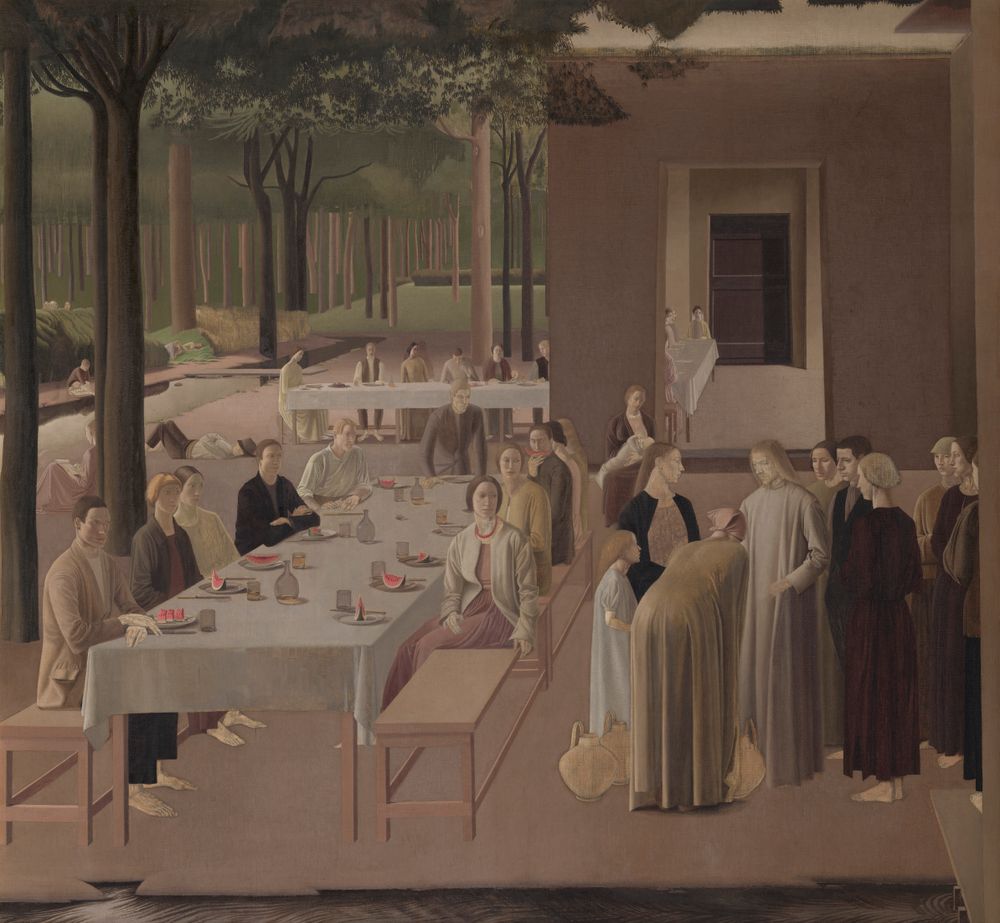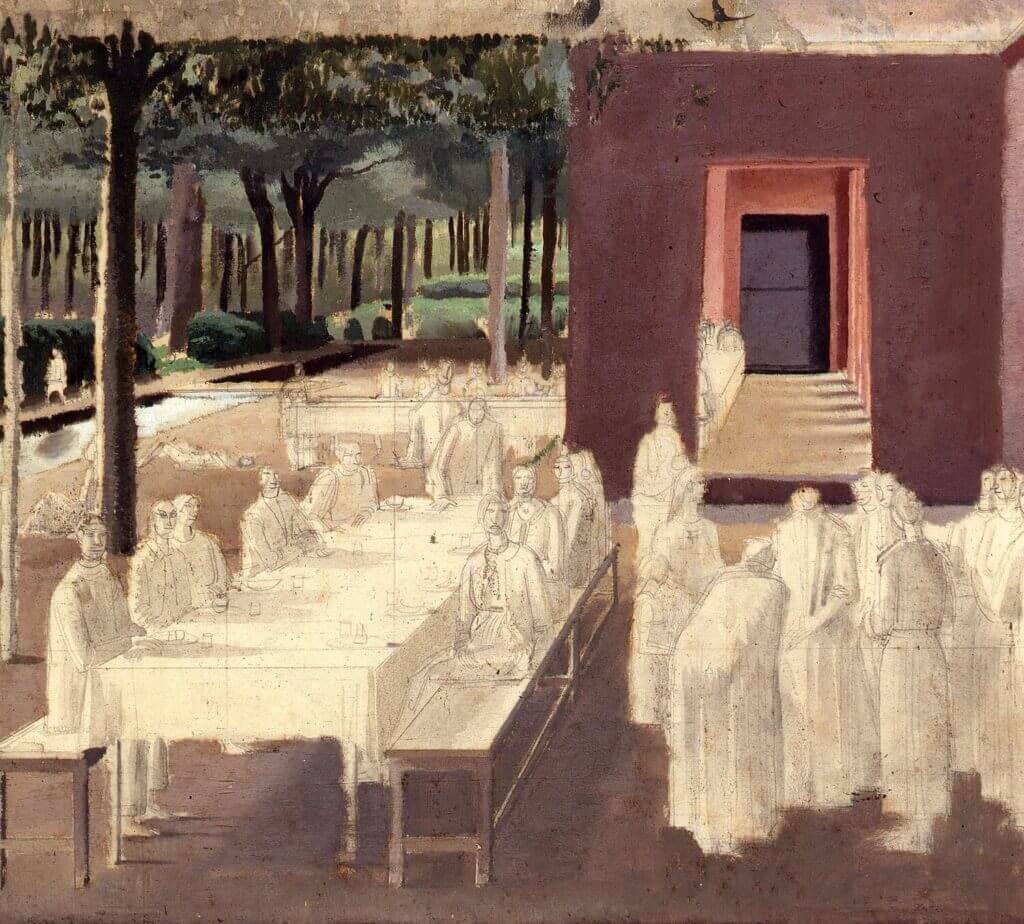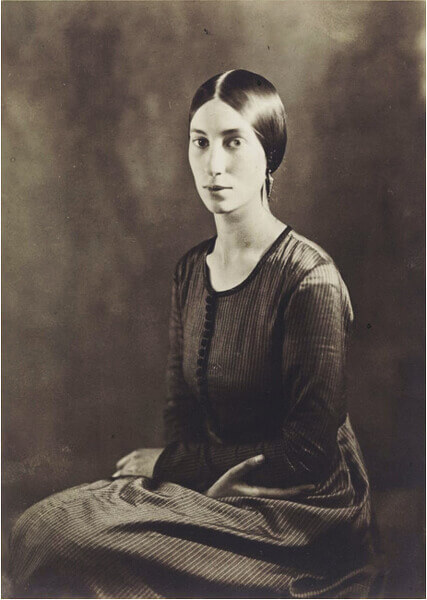Your currently viewing RAW Modern | Switch to RAW Contemporary
Study for the Marriage at Cana, 1923
Catalogue essay by Blanche Llewellyn
During the tenure of their Scholarship at the British School at Rome, Rome scholars were required to produce a large Decorative Painting, to demonstrate that they had studied the great fresco cycles of the Italian masters and understood their technical excellence.
Knights chose the biblical narrative of the marriage feast at Cana for her painting, working through a series of compositional studies in pencil and watercolour before resolving upon her final design.
This later study in oil features bright colours – showing a marked evolution in the palette from the earlier studies, which was later replaced by a more sombre tonality.
The Marriage at Cana was inspired by the endless dinners and lunches hosted at the British School at Rome. The simple tables and benches are faithful representations of those used at the British School before Lord Esher gifted a more imposing set in 1924. Knights appears at the two foreground tables and as the bride under the loggia. Fellow scholars Lillian Whitehead and Alfred Hardiman are also among the guests, as is Knights ‘fiancée’ Arnold Mason who is seated on the main table fifth on the left and third on the right – Knights broke off her semi-engagement to Mason a year after she had conceived the composition, falling in love instead with Thomas Monnington, the Rome Scholar for 1922, whose portrait she later added to each of the tables. Knights and Monnington married in 1924.
Knights set her marriage feast in the Villa Borghese Gardens located just below the British School at Rome. She spent long hours in these gardens, walking among the romantic ruins, fountains and avenues and sketching under the shade of ilexes and umbrella pines. The lady seated under the tree sketching, wearing coral earrings, is clearly a self portrait.
Before starting work on her composition, Knights had visited Arezzo and seen Piero della Francesca’s fresco cycle there, The Legend of the True Cross. The contemplative mood and harmoniously restricted palette of The Marriage at Cana was clearly influenced by Piero, whose work provided influence and inspiration throughout Knights’ life.

Final composition of the Marriage at Cana, 1923 (Museum of New Zealand, Te Papa Tongewera)

